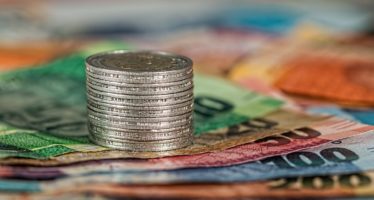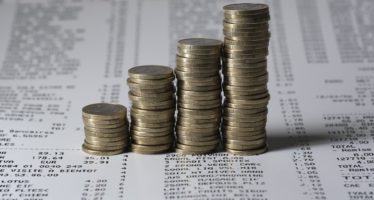2022 Guyana National Budget – Heavy on Higher Living Standards (Part 2)

Part 1 of this column reviews social measures announced in Guyana’s 2022 national budget. Part 2 will review major development initiatives.
While there were no major surprises, Guyana’s 2022 budget proposes substantial investments in what the government refers to as transformational infrastructure, designed accelerate the country’s development.
The budget identified three areas which are deemed to be the transformational in nature, including energy expansion and diversification, transport Infrastructure and sea and river defence.
The budget banked on oil revenues to boost its development initiatives and is the first that will benefit from financing from the proceeds of the country’s oil sector. This only became possible after changes were made to the terms and conditions for withdrawals from National Resource Fund late last year.
As expected, developments in the oil and energy sectors were the centerpiece of the budget. In the oil sector, the Finance Minister noted that that production capacity which is currently at 120,000 bpd (barrels per day) is expected to increase to 340,000 bpd later this year and to 560,000 bpd in 2024, rising to 810,000 bpd by 2026/27 and to 1 million bpd by 2030.
In addition, gas reserves which are currently estimated at 16 trillion cubic feet (Tcf) are expected to continue to grow. Production from three other wells are projected at another 70 million standard cubic feet per day (mmscfd). This, according to the Minister of Finance, augurs extremely well for the proposed Gas-to-Energy Project, which is expected to be completed in 2024.
The Gas-to-Energy Project will allow the country to phase out the use of expensive and carbon-intensive heavy fuel oil and is expected to significantly reduce energy costs. The project encompasses the establishment of a 300 MW power plant as well as a Natural Gas Liquids (NGL) plant that will satisfy domestic demand. The project entails the construction of 225 kilometers of 12” pipeline to transport a guaranteed minimum of 50 mmcfd of natural gas from offshore Guyana to the Wales Development Authority.
Construction of the Power and NGL plants is expected to start in the third quarter of 2022, with a targeted completion date of the end of 2024.
The energy sector is also expected to benefit from the proposed construction of the 165 MW Amaila Falls Hydroelectric Project (AFHP) which was previously shelved as a result of lack of political consensus. The budget announced that the government has received, and evaluated proposals for the project, and negotiations are underway with an international company to develop it under a build-own-operate-transfer (BOOT) arrangement, whereby Guyana Power and Light will purchase power from the operator under a Power Purchase Agreement. It is anticipated that construction will begin in 2022 and be completed by 2027.
To boost power supply to the interior areas, the budget also announced that the government has advanced the process for the construction of a 1.5 MW hydropower plant at Kumu, the rehabilitation and upgrade of the defunct Moco Moco hydropower plant in Region 9 to a 700 MW capacity and the completion of a 150kW hydropower scheme at Kato.
In its quest to produce more clean power, the budget also announced several solar powered projects, including the completion of a 1.5 MW solar farm at Bartica, a 0.75 MW farm at Wakenaam and the 1.0 MW farm at Lethem. It also plans to tender for a 0.6 MW solar farm at Leguan and a 0.65 MW farm at Mahdia later this year.
In total, the budget allocated $29.4 billion to the energy sector in 2022, with the Gas to Energy project absorbing the lion’s share of $20.8 billion.
In the Transport Infrastructure sector, the budget has allocated $76.7 billion for roads and bridges.
Major projects in this sector include construction of the East Bank-East Coast Demerara Road Linkage between Ogle and Eccles; the rehabilitation of the Corentyne Main Road from Palmyra to Crabwood Creek; the construction of the Linden-Mabura Hill Road; rehabilitation of the entire Soesdyke-Linden Highway; completion of the Sheriff Street – Mandela Road Network Expansion Project; construction of a new four-lane highway linking Mandela Avenue to Haags Bosch and the construction of the four-lane Ogle to Haags Bosch road; the widening of the East Coast highway from Annandale to Mahaica; the upgrade of the railway embankment from Sheriff Street to Orange Nassau; and the construction of the new four-lane superhighway from Schoonord to Parika.
These roads are in addition to the upgrade of several community and interior rods across the country.
Major bridge projects targeted in the budget include the construction of a fixed four-lane high span Demerara River Bridge, rehabilitation and maintenance of the existing floating bridge across the Demerara River,and the re-construction of several bridges along the Kurupukari to Lethem corridor.
In the air transport sector, the Government plans to focus on the continued modernisation of the Cheddi Jagan International Airport and the rehabilitation and maintenance of several hinterland airstrips.
In the area of Sea and River Defences, the budget proposes to focus primarily on flood protection infrastructure across the country. The budget has allocated $5 billion to strengthen the flood protection infrastructure system through sea and river defence works in areas such as Grove, La Resource, Maria’s Delight, Zeelandia, Leguan, Bygeval, Essex and Bengal.
Beyond the dominant oil sector, the budget reiterated the importance of agriculture as the anchor for the country’s the non-oil economy. It also pointed out Guyana’s ability to take advantage of regional trade opportunities in food products and noted that the country has a golden opportunity for Guyana to finally realize its potential as the breadbasket of the Caribbean based on the region’s quest to cut its extra-regional food import bill by 2025.
In the struggling sugar sector, the Finance Minister stated that the Government’s commitment to the sugar industry remains unwavering in spite of inheriting a devastating situation that was dominated by the closure of three sugar estates. Currently, the government’s focus has been on reopening and recapitalising the closed estates; rationalising cost structures; diversifying the sugar sales mix to maximise earnings; re-engaging previously displaced workers; and repositioning the industry on a sustainable path to profitability.
In 2022, the budget proposed strategic investments at Albion, Blairmont, and Uitvlugt, to upgrade and mechanise where appropriate the field operations, and expand packaging capabilities to produce more value-added products for the domestic and international markets. The budget allocated $6 billion to support GuySuCo’s ongoing investment in field and factory operations to turn around the industry.
Rice, which remains the most viable agricultural crop, is expected to benefit from improved drainage and irrigation to mitigate losses, and expanded research on new high yielding varieties, and seed production.
The other crops sector, which is critical for food security is expected to benefit from extended government support to the private sector to produce non-traditional crops such as corn, soya, coconuts, broccoli, cauliflower, spices, citrus, and fresh flowers.
As interest in Guyana continues to grow, Guyana is anticipating a surge in post-pandemic visitors. The budget stated that an additional 200 rooms will become available this year with the anticipated completion of the Pegasus Suites and Corporate Centre in 2022. In addition, three internationally branded hotels are already under construction with a further 485 room capacity. As well, approximately eight additional hotels are expected to commence construction in 2022, which would increase the room stock by a further 995 once completed.
In a major development, the budget announced that significant progress has been made in modernizing Guyana’s Payment System infrastructure. It stated that the Real Time Gross Settlement (RTGS) and Central Securities Depository (CSD) Systems were fully integrated with the Automated Clearing House (ACH). The new system went live during the first quarter and facilitated over 413,000 transactions to date, including the payment of all government pensions and salaries.
The government expects to engage the country’s financial systems vendors to further integrate their systems with the National Payments System. This will enhance the processing of all payments electronically, while setting the stage for digital banking and securities settlement.
Regulations for dematerialisation of government and bank securities and settlement and treatment of collateral are currently under review. These developments will serve to reduce the cost and risk of transactions while expanding the legal framework to support modernising the country’s financial sector architecture.
Dwarka Lakhan
Dwarka Lakhan is a pioneer in emerging markets journalism in Canada. His first emerging markets article, “Africa Joins Ranks of the Emerging,” appeared in Investment Executive, Canada’s leading newspaper for financial advisors, in September 1994. Since then he has written hundreds of articles on the full spectrum of emerging markets and has conducted more than two thousand interviews with emerging and frontier markets investment professionals.
Related Articles
Guyana to remain on path to prosperity
Coming off a year of record-breaking economic growth, Guyana’s economy is expected to record another world-leading performance in 2023, with
Can Guyana emerge as a hotbed for financial and related crimes?
As Guyana’s economy steams ahead on the back of its bourgeoning oil sector, buoyed by a flood of foreign investments,
Total public debt rising, not falling
Contrary to misleading headlines in the local press, Guyana’s external as well as its domestic public debt have been rising



